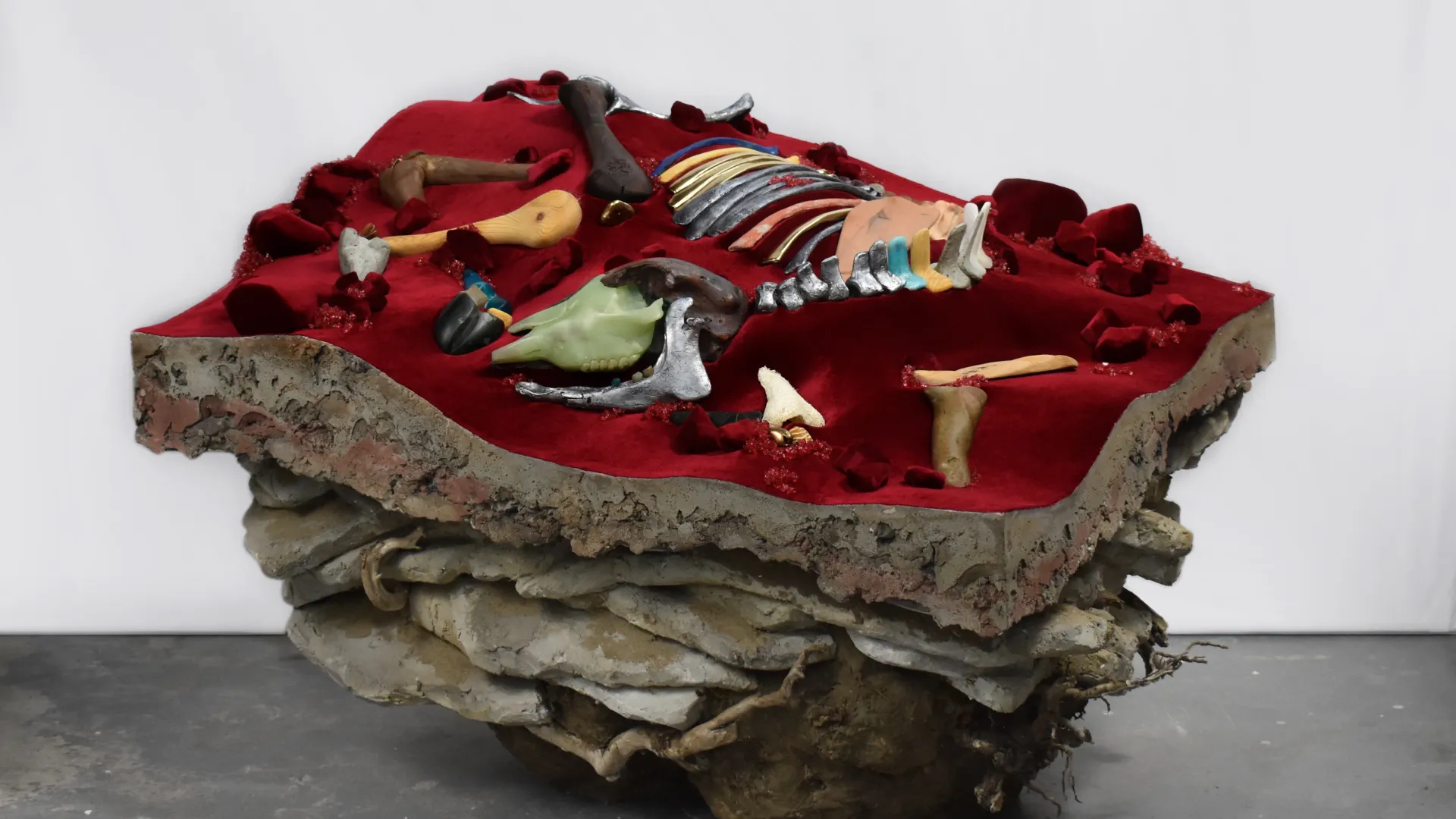Catalog of Impermanence
Nicholas Crombach, Hana Hozhabr Pour, Bager Kaya, Alex Power

Museums and still lifes once promised permanence. Fossils, specimens, and arrangements of fruit or flowers were set before the eye as assurances that the world could be ordered, preserved, and understood. Yet this exhibition brings together four contemporary practices that unravel those very conventions, recasting them as sites of instability, confrontation, and transformation. Each artist engages with the residue of natural history and the conventions of display, not to replicate their authority, but to open them to reinterpretation.
Nicholas Crombach approaches the language of museological display as material to be disrupted. Decorative arts and natural history references are unsettled by playful gestures, unexpected surfaces, and reconfigured forms. What appears familiar is made strange, drawing attention to the blurred boundary between culture and nature.
For Alex Power, geological and archaeological forms are not static relics but mutable presences. Their engagement with water emphasizes fluidity, reminding us that fossils, like memories, are never fully fixed. Their work suggests that even the most solid foundations are porous, malleable, and caught in states of becoming.
Hana Hozhabr Pour turns to painting as a process of dissolution and emergence. Through fading, washing, and repetition, her surfaces capture emergence rather than resolution, presenting the canvas as a record of transformation, instability, and fleeting form. In her practice, abstraction becomes a mode of attending to impermanence.
Bager Kaya reframes the still life as a site of protest. Through painterly photography, arrangements of rotting fruit, fallen birds, and spoiled abundance dismantle the genre’s historic association with wealth and permanence. Decay here is not only a process of loss but also a language of resistance, revealing the fragility beneath curated beauty and the violence of systems that consume and discard.
Together, these practices expose what museums and still lifes have long sought to conceal: the inevitability of change, the persistence of decay, and the instability of meaning itself. By inhabiting the thresholds between preservation and decay, stasis and movement, order and disorder, this exhibition displays that what survives is never what was intended, but what emerges after.
-Morgan Mavis
Please be advised that OCAD U hosted events may be documented through photographs and video. These images may be used by the University for promotional, advertising, and educational purposes. By participating in our events, both on campus and off-site, you consent to allowing OCAD University to document and use your image and likeness. However, if you do not want us to use a photo or video of you or your child, please don’t hesitate to let us know when you arrive at the event. You’re also welcome to get in touch with OCAD University’s Marketing & Communications office: communications@ocadu.ca.
Be mindful of those in our community who have scent sensitivities; please help OCAD U maintain a healthy, scent-free campus.
